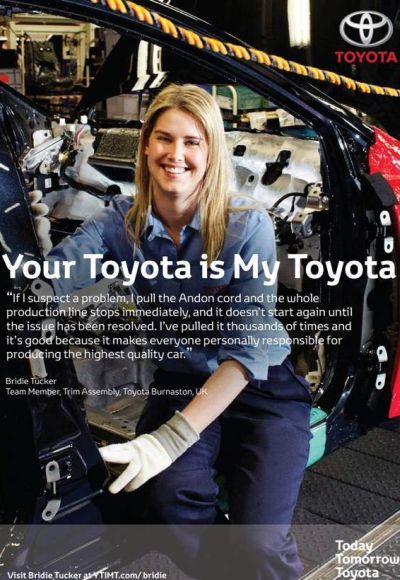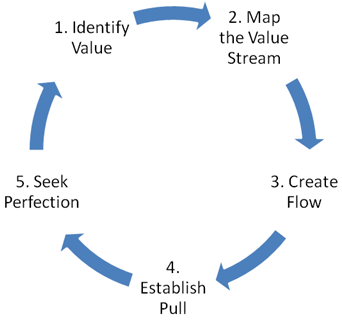Lean Principles
Around two decades ago, Quality was the management buzzword. Since then we’ve progressed, from Business Process Engineering through to eCommerce. In the same way high street fashion recycles, so it seems do business fads. Quality makes a return in the guise of Lean Principles.
As seen on the BBC’s local Politics Show last Sunday, in these times flagged austere, pockets of the pubic sector have successfully applied this Japanese management thinking to reduce costs and improve service delivery.
Toyota’s Burton-based Production Director, Marvin Cooke commented that it’s all about the elimination of waste. If a cost does not add any value, then get rid of it.
A young lady from Toyota’s production line (see company ad below), talked enthusiastically about a rope which each individual worker can pull to stop the line. Called the Andon Cord, it hangs along the length of the line above the machinery. An amber light alarm indicates when an issue occurs at a particular station. The whole line stops so that the problem can be tackled straight away rather than wait until it snarls up the entire process. It nips issues in the bud early and prevents costly downtime. See the yellow/grey rope:

Then Edward Bradford, a municipal engineer from Solihull recounted traffic regulations improvements. Things like painting new double yellow lines had 153 stages and took eight months. Applying Lean, so far this is down to 49 processes and takes three months. These provide substantial savings (possibly £800k) as part of multi-million drive with Lean throughout the council.
Proponents maintain a web presence documenting the virtues of Lean.
The HBR’s Working Knowledge also provides an interesting overview of all things Lean from 2007. They include their quartet of pointers.
Rule 1: All work shall be highly specified as to content, sequence, timing, and outcome.
Rule 2: Every customer-supplier connection must be direct, and there must be an unambiguous yes or no way to send requests and receive responses.
Rule 3: The pathway for every product and service must be simple and direct.
Rule 4: Any improvement must be made in accordance with the scientific method, under the guidance of a teacher, at the lowest possible level in the organization.
Where this gets intriguing for solution salespeople is when you map these principles to both client and your own internal processes.
Firstly and most obviously, if you sell a product or service which removes or makes redundant certain steps in a customer process, then attach this thinking to your presentation. It will not only help your cause, but also give your prospects an extra lever to use against their internal barriers.
Then there’s what’s going on in your own sales department. I have heard many a rep bemoan hurdles such as the sign-off necessary before quotes go out the door, the constricting levels of authority required to secure pre-sales resource and the draconian systems that too late in the day if at all permit deal incentives.
Lean principles applied in-house may well smooth your own pathway to success. A success which appears, in 80% of instances, to lead to a minimum of ten percent increase in efficiency. What would that look like on your bottom line?

